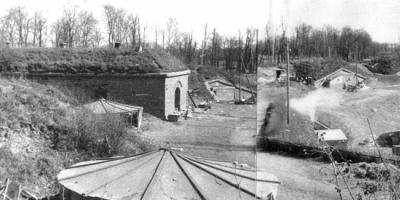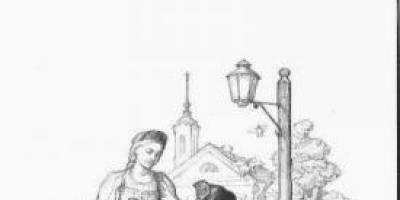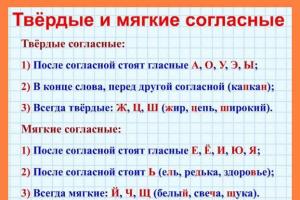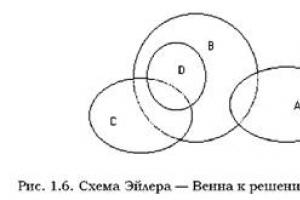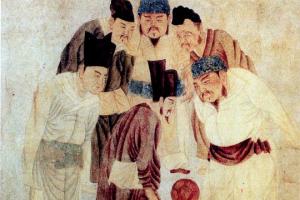Scroll Down
1 && "cover" == "gallery"">
((currentSlide + 1)) / ((countSlides))
Kadykchan, one of the most famous ghost towns in the Far East, is located 730 kilometers north of Magadan on the famous Kolyma highway. Kadykchan arose during the Great Patriotic War as a workers’ settlement and was built by the hands of prisoners. Coal was mined here for the Arkagalinskaya State District Power Plant. The village grew until the end of the 1980s, its infrastructure included everything necessary for life: a school, a hospital, shops, kindergartens, a cinema, a restaurant, a cafe and a sports complex.
In 1989, the population of Kadykchan approached 6,000 people, it would seem that the village had room to develop further: more and more specialists came, new five-story buildings were built, but in the 90s, difficult times came for the entire Magadan region - and Kadykchan was no exception.
Despite the difficulties, the village continued to exist, although the mine, its heart, as local residents say, was already dying. Eventually, in 1996, there was an explosion that killed six workers. After the accident, they decided to close the mine, and then resettlement began - Kadyk residents began to receive funds for resettlement depending on their length of service. Kadykchan was not empty immediately: in 2002, about 800 people lived in the village, in 2009 - about 200 people, and a year later the village became a full-fledged ghost town.
Former Kadykchan residents have long moved in all sorts of places, many moved to the “mainland”: to Moscow, St. Petersburg, Novosibirsk, Nizhny Novgorod. In large cities they try to hold an annual congress of Kadykchan residents to see each other and remember the past. The editors of DV asked former residents of Kadykchan to talk about the times when the famous Kolyma ghost town was still alive.
Yulia Zakharova, 33 years old
Mom told me that when I was born, it started to snow and all the flowers and summer greenery were hidden under the snow. In Kadykchan, this happened often; there was no spring or autumn there - the snow melted in just a few days and in just a couple of days it became bright like summer, and yesterday's snow-capped hills were covered with lush greenery and snowdrops. My mother loved wildflowers very much, and my father always picked them at the “digging” - this is a reservoir, a quarry, next to the village. In the summer we all swam there; It was impossible to dive deeper than half a meter, and the icy water caused cramps, so we swam in short bursts and warmed ourselves by the fire during the break. We sunbathed right there on the glacier, wearing felt boots and swimsuits. If the sun was hiding, then they threw on fur coats, and the sunlight reflected from the ice and snow stuck instantly, and you could get burned.
Galina Eremenko, 39 years old
Behind my house on Stroiteley Street the taiga began, and that’s where we spent all our childhood years. My girlfriends and I often spent the winter holidays on the ski track. The hills were covered with such a layer of snow that one could simply drown in it, and the ski track stretched far beyond the village. Adults did not always take the risk of going where we were taken. One day, my friend and I turned off the paved ski track, and after some time we heard the loud roar of a connecting rod bear. We raced back to the village so that we couldn’t feel the snow under our skis. And when I showed up on the doorstep of the apartment with a broken ski and no pole, my dad didn’t even ask me anything, he seemed to understand everything from my face.
In the summer, such a childish chaos began on the streets that no one needed televisions. The game of badminton became a team game, with several pairs playing together at once. A special place was a spot near the high school. There, not far from the school, in the remains of islands of marshy terrain, not walled up with concrete slabs, we caught newts. White summer nights made it possible to forget about time, and when we came home, we often received a badminton racket from our parents in full.
Vasily Simonov, 43 years old
As a child, I always looked forward to the time for the New Year's fireworks - it was an indescribable sight. I don’t know where the residents of Kadykchan purchased flares, but in the end, after the chimes, everyone took a box of cartridges out into the street. And the magic began: the sky lit up with thousands of lights of red, green and white - and the night turned into day.
They shot from devices made by craftsmen from two sections of pipes of different diameters. There were also rockets: you pull the rope - and a light with a tail, like a comet, noisily flies out of the tube, and already there, high in the sky, it opens with a bright flash. I remember how I stood with my head raised and looked at the chaotic movement of bright multi-colored stars - I was happy, and every New Year delighted and delighted me in a new way. It's a pity that I haven't seen anything like this anywhere else. Having moved to the “mainland”, I never saw such fireworks again.
Winter is when it’s minus 45, school days are active and everyone goes for a walk to the skating rink; This is when the first snow does not melt throughout the winter and becomes compacted from frost so that it turns into ice crystals similar to cereals. The small river “Kadykchanka” was completely frozen over in some places, or rather, frozen out. The top layer of ice created the effect of a frozen river, but if you break through the ice, you can go down into the dry sand and stone river bed.
One of the constant entertainments was, of course, sliding down the hill. They called her “mad woman.” This was a road for bulldozers through a hill leading to “block 32” - a rather steep and protracted descent of half a kilometer, which evoked a lot of emotions and an avalanche of children’s joy. We rode on anything that glides even a little on the snow, but the most interesting thing was the descent on a large sheet of tin with corners bent on four sides. We shamelessly removed these sheets from pipelines, where they served as thermal insulation protection.
Maria Petrova, 33 years old
In the village next to the hostel there was a two-story building. On the ground floor there is a cafe and cooking area, and on the second floor there is a restaurant, where weddings were often celebrated. As children, we would watch for someone's procession: before entering the restaurant, the newlyweds would be showered with candy and money - and we always got something. And in this cafe, which is on the ground floor, I tried pumpkin ice cream for the first time. Until now I have never seen anything like this anywhere.
In those latitudes -50 was normal. But, despite the cold, we loved to walk and play outside. The most vivid memory from childhood is the day when a pipe burst and all the water that burst out of it like a fountain instantly froze, turning into a real ice slide, which we, the children, immediately occupied. I also remember that a helicopter often landed in the schoolyard, and we always went to meet it. We sat down somewhere comfortable and waited until the characteristic sound of an approaching “bird” was heard.
Tatyana Sbezhneva, 33 years old
In winter, when the temperature dropped to -55, the schoolchildren were announced active days - we did not study. But the frosts didn’t stop us, and we went for a walk, for which we later received good money from our parents. We then lived on Stroiteley Street, this is where the famous house with a deer stands, in the yard of which there was a children's complex. We called it “town”, there were two slides: one flat, the other with a springboard.
There was always some volunteer who poured a bucket of water onto the slide. The frost was severe, the water froze almost instantly. Then they came to a nearby store called “On the Seven Winds” and took from there all sorts of cardboards and oilcloths, which the whole crowd rode on. At -55 it was, of course, hard outside, so we walked for 20-30 minutes at a time, and then warmed up for two or three hours at someone’s house.
Kadykchan- the most famous of the abandoned villages of the Magadan region. Kadykchan (translated from the Evenk language - Death Valley) is an urban-type settlement in the Susumansky district of the Magadan region in the Ayan-Yuryakh river basin (a tributary of the Kolyma) 65 km northwest of the city of Susuman on the Magadan - Ust-Nera highway. The population according to the 2002 census is 875 inhabitants, according to unofficial estimates for 2006-791 people. According to data for January 1986 - 10,270 people.
The village was once the location of one of the Kolyma Gulag camps.
The village was built after geologist Vronsky found coal of the highest quality there in 1943 at a depth of 400 meters. The mine and the village were built by prisoners, among whom was the writer Varlam Shalamov. Mining was carried out underground from depths of up to 400 meters. Coal was used mainly at the Arkagalinskaya State District Power Plant, which supplied electricity to 2/3 of the Magadan region.
The village arose in stages, so it was secretly divided into 3 parts: Old, New and Newest Kadykchan. Old Kadykchan is located closest to the above-mentioned route, New surrounds the city-forming mine (No. 10), and Newest is 2-4 kilometers away from both the route and the mine and is the main residential village (with its construction, Old and New Kadykchan were increasingly used for conducting farms (greenhouses, vegetable gardens, pigsties, etc.) In the east there was another coal mine (popularly called seven, No. 7, it was abandoned in 1992).
The almost 6 thousand population of Kadykchan began to rapidly melt after an explosion at the mine on November 15, 1996, in which 6 people died. After the explosion the mine was closed. All people were evicted from the city, giving them from 80 to 120 thousand rubles for resettlement, depending on their length of service. The houses were mothballed, disconnecting them from heat and electricity. Almost the entire private sector was burned to prevent people from returning. However, even in 2001, 2 streets (Lenin and Stroiteley) and one house on Mira Street (which housed a clinic, and by that time a hospital, as well as utilities) remained residential in the village. Despite this dismal situation, in 2001, construction was still underway in the village of a new boiler house-skating rink and a shopping complex next to the village council.
A few years later, the only local boiler house defrosted, after which it became impossible to live in Kadykchan. By this time, there were about 400 people living in Kadykchan who refused to leave, and there had been no infrastructure for several years.
The awarding of the status of unpromising to the village of Kadykchan and the resettlement of its residents was announced on the basis of the law of the Magadan region No. 32403 of April 4, 2003.
According to former Kadykchan resident V.S. Poletaev, “Kadykchan residents were not evacuated in 10 days, but they left on their own. Those who were entitled to housing after the liquidation of the mine and open-pit mine waited. Those who had no chance left on their own to avoid freezing. Secondly, Kadykchan was closed not because it was unfrozen, but on orders from above, as an unprofitable village.”
By 2010, only two of the most principled residents remained in the village. By 2012, only one elderly man with two dogs remained. Now Kadykchan is an abandoned mining “ghost town”. There are books and furniture in houses, cars in garages, children's potties in toilets. On the square near the cinema there is a bust of V.I. Lenin, which was finally shot by residents.

Location: Russia, Magadan region.
Latitude: 63°4"38.46"N
Longitude: 147°0"39.88"E
Time zone:“November” UTC-1
Base: 1943
Liquidation: 1996
Reasons for disappearance: Cities and towns resettled due to the cessation of mining.
Current status: Non-residential settlement
Kadykchan (translated from the Evenki language - Death Valley) is an urban-type settlement in the Susumansky district of the Magadan region. It is located in the basin of the Ayan-Yuryakh River (a tributary of the Kolyma) 65 km northwest of the city of Susuman on the Magadan - Ust-Nera highway.
Abandoned mining ghost town.
“The village with a population of 6 thousand people quickly faded away after an explosion at a local mine in 1996.”






Kadykchan has been completely uninhabited for several years now, there are no residents left there
Kadykchan... Translated from the Even language - Death Valley. Such a terrible name because in this valley there are underground lakes that sometimes break through to the surface, in an unexpected place, at an unexpected hour! The indigenous Kolyma residents feared this place as if it were enchanted. And the Russians built a village there after the geologist Vronsky found coal of the highest quality there in 1943. Coal began to be mined from underground from 400 meters away. The Arkagalinskaya CHPP operated on Kadykchansky coal and supplied electricity to 2/3 of the Magadan region! A beautiful urban village with a population of 10,270 people (as of January 1986). In the most beautiful and richest place! He was... Now he's gone... He's dying. Time destroys five-story buildings with rain and winds, the wind blows through empty apartments, streets and squares are overgrown with grass... Residents live on what they can get from hunting and fishing, and even selling scrap metal.






Here are excerpts from an article by Yu. Solovyova for bbcrussian.com, Moscow: “A multi-storey school has been burned down. Huge cracks are crawling through the building of a sports complex with a swimming pool and an ice arena. The roof of the former club has completely collapsed, as if after a bombing. Everywhere there are broken windows of houses and mountains of construction garbage. The ghost village was supposed to be resettled before the start of winter, but they didn’t have time to do this. Several hundred people remained here to spend the winter."
“The almost 6 thousand population of Kadykchan began to rapidly melt after an explosion at the mine in 1996, when it was decided to close the village. There has been no heat here since last January - due to the accident, the local boiler room froze forever. The remaining residents are heated using potbelly stoves. Sewerage has not been working for a long time, and they have to go outside to the toilet. A handful of the last of the Kadykchan residents are determined to dig in here until they are provided with better conditions for resettlement."
The head of the Susuman administration, Alexander Talanov, has been building housing and infrastructure in Kolyma for many years. Now his task is to destroy all this with his own hands and systematically. He compares the stubborn reluctance of Kadykchan residents to move to “the syndrome of prisoners who have served many years and are afraid to be released.” “If you don’t want to move, give up everything and live here like Robinson Crusoe,” he gets irritated. “If production is closed, social services and communal services cannot be city-forming.” Talanov has come to terms with the fact that he is blamed for all the troubles, but claims must be made to Moscow: “Not a single government, not a single president has ever paid enough attention to the far north,” says Belichenko. “The inhabitants of the far north have been made extreme.”









By the beginning of winter, about 500 adults, mostly pensioners, remained in the city. In January, the local boiler room defrosted, and Kadykchan was left without heating in 40-degree frost. Stubborn old-timers built potbelly stoves and stoked them with neighbors' furniture. They went to the toilet in the front door and even outside, even in the bitter cold. However, no one died from frostbite. But hopes for revival were not destined to come true. In 2003, the village of Kadykchan was officially abolished, which means no pensions, mail or benefits. However, just two years ago, about 200 people who were unnecessary to the country somehow lived here, and instead of money, gold sand and stolen non-ferrous metal were in use. Someone, drunk and in a fit of anger and despair, shot the monument to Lenin with a hunting rifle... 









The first problems appeared in the early 90s: interruptions in transport transporting coal, delays in wages, empty grocery store shelves. In September 1996, an explosion occurred at the mine, killing 6 people, after which it was decided to close the enterprise, leaving several thousand people without work. The shocked residents of the village were ready to believe the ridiculous rumors that the mine was blown up on purpose. The management, the bandits, and the Magadan administration were suspected of this. The unsuccessful resettlement program for the village did not allow for a single extra penny, so those who left first, families with children, abandoned their apartments with all their furniture and appliances. Many seriously hoped to return, and therefore left inscriptions on the doors designed to scare away looters. 















YELTSIN 90s
The final and fatal blow was dealt with particular sadistic cruelty. Someone will object that it was such a time, the dashing nineties. The culprits cannot be found, nor the intent. There is intent. Eat! Why are only Kolyma and Chukotka in ruins? Why, eighty kilometers from Kadykchan, having passed the border with Yakutia, you won’t see anything like this? After all, it’s the same Kolyma, the same climate, the same country? This means we are witnesses to a clearly planned action carried out exclusively on a territorial basis. And this was not in “ancient times”; we are living witnesses to a catastrophe about which everyone is silent. The truth is kept silent at all levels, which indicates a highly organized genocide.
Thousands of miners' families were thrown out of life. Erased from history. Forgotten as agents behind enemy lines without documents. The country betrayed a people loyal to the country, as it has done many times before. How she betrayed the sailors of the Kursk nuclear submarine, how she betrayed her own in the near abroad, how she betrayed her own in Krymsk, and I won’t list everything that is already quite well known.
People were doomed to starvation. Their salaries were “forgiven” not for months... but for years! People fled to the mainland as best they could, saving their children, getting into debt, borrowing money from relatives to pay for the move. Money went out of circulation. Gold became the means of payment. It's that damn gold again. A bottle of vodka cost three grams of sand, and a two-room apartment cost nine! But even for three bottles of vodka no one bought an apartment, the houses are empty, go to any one and live, it has everything you need for life, including furniture and household appliances. People simply did not have the means to take out what they had acquired over many years.
The Ingush organized criminal group from Susuman immediately became active. They began to buy gold for next to nothing, like from African savages during the colonial period. First they paid with stewed meat, bread, ammunition, and other essentials. In order to survive, people began to go to the taiga for gold, just as before for mushrooms and berries. Do you remember how many worthless tires used to be lying along the sides of the Kolyma highway? If they were stacked into a pyramid, the top would scratch the bellies of passing planes. Can you find one now? No. All tires became worth their weight in gold, because prospectors began to use them as fuel to thaw permafrost. They will burn several cylinders, and quickly wash the soil before the water freezes in order to earn money for a can of stew. But this was not enough for the Ingush! People do not want to be slaves, they began to demand decent payment for their hard labor, life-threatening work. A proven method was used - to get people hooked on drugs. And our Caucasian brothers began to pay in heroin. The method worked instantly. When people realized what a trap they were in, dozens of gold miners were already working day and night not for food for their wives and children, but for the next check of gold. Realizing the horror of the situation, people gathered and shook themselves. They remembered that they were Russian men, not slaves. And they decided to fight back against the Ingush slave owners. When none of the miners handed over the mined gold to the Caucasians, they began to threaten with violence. Several jeeps with abreks arrived, and at the entrance to the village at the Nizhny store they were already met by a dozen Russians with carbines and guns. There was a shootout, no one was seriously injured, several participants had minor scratches. But the battle was won. The sons of the mountains jumped into their leaky SUVs and very briskly went back to their homes.
And you say Sagra.... But now an even more cruel period has come, there is no one to hand over the gold to! Don’t bring it to the state that betrayed them and left them to be torn to pieces! If you bring it, you will immediately find yourself in a detention center and go to trample the zone for illegal trafficking in precious metals. and then a miracle happened!
The government now had the means to move. And at the beginning of the 2000s, the last residents of Kadykchan left for the mainland under the resettlement program. Finally, the opportunity to find a new homeland arose. Almost everyone who had nowhere to go was transported to the city of Neryungri in the south of Yakutia. They gave us housing, although it was mostly squalid, in old wooden houses, but it was free. They gave me some "lifting" allowances for settling in, and got me a job at a local coal mine. Kadykchan was excluded from the cadastre of Russian settlements, the postal code 686350 remained an empty cell in the catalogs. The supply of water and electricity was stopped, the last boiler house was stopped.
KADIKCHAN IN A COMA
At the last stage of the murder, people moved from all over the house into one entrance. So as not to heat empty areas. They switched PBX cables and compiled telephone directories themselves, which became shorter and shorter every month.
Remember TV presenter Yana Chernukha? So these films were shot by her dad, a correspondent for the Susuman newspaper "Miner of the North". He was a very talented photographer, it should be noted.
The sports ground of the school, whose graduates have now scattered all over the world. USA, Italy, Spain, Canada, Israel, Estonia, Latvia, Ukraine, Kazakhstan, etc.
Everyone defended themselves from the looters as best they could.
The last Kadykchan resident, the hermit Yura Apollonsky, lived in this kennel until the mid-2000s. My school friend, with whom many miracles were done in his time. Now, as far as I know, he lives in Magadan.
I lined the kennel with snow blocks like an Igloo. He sawed metal in the ruins of the “Ten” mine, and once a week, a car came and took away what he sawed in exchange for food. Thus ended the history of the village. but not the story of Kadykchan. Kadykchan is alive as long as the last Kadykchan is alive. In the future there will be an article about New Kadykchan, which now exists virtually, but once a year, for a week, it is reincarnated in the form of a tent town on the shore of a lake in the Dzerzhinsky district of the Nizhny Novgorod region. There is hope that we will still be able to make sure that the truth comes to light. So that everyone knows what kind of government we have. So that no one has any illusions that without government rule we will turn into an unorganized crowd. The state as an institution of law appeared in the form of a machine of coercion and submission. Its positive role in the history of society is questionable. A developed state is able to regulate itself more effectively than written laws, police and lawyers. I will also write about this if I am alive.
Story
 It arose during the Great Patriotic War as a workers' settlement at a coal mining enterprise at the Arkagalinsky deposit. The mine and the village were built by prisoners, among whom was the writer Varlam Shalamov. Mining was carried out underground from depths of up to 400 meters. Coal was used mainly at the Arkagalinskaya State District Power Plant. The village arose in stages, so it was secretly divided into 3 parts: Old, New and Newest Kadykchan. Old Kadykchan is located closest to the above-mentioned route, New surrounds the city-forming mine (No. 10), and Newest is 2-4 kilometers away from both the route and the mine and is the main residential settlement (with its construction, Old and New Kadykchan were increasingly used for conducting farms (greenhouses, vegetable gardens, pigsties, etc.) In the east there was another coal mine (popularly called seven, No. 7, which was abandoned in 1992).
It arose during the Great Patriotic War as a workers' settlement at a coal mining enterprise at the Arkagalinsky deposit. The mine and the village were built by prisoners, among whom was the writer Varlam Shalamov. Mining was carried out underground from depths of up to 400 meters. Coal was used mainly at the Arkagalinskaya State District Power Plant. The village arose in stages, so it was secretly divided into 3 parts: Old, New and Newest Kadykchan. Old Kadykchan is located closest to the above-mentioned route, New surrounds the city-forming mine (No. 10), and Newest is 2-4 kilometers away from both the route and the mine and is the main residential settlement (with its construction, Old and New Kadykchan were increasingly used for conducting farms (greenhouses, vegetable gardens, pigsties, etc.) In the east there was another coal mine (popularly called seven, No. 7, which was abandoned in 1992).
In September 1996, an explosion occurred at the mine, killing 6 people. After the explosion the mine was closed. All people were evicted from the village, giving them from 80 to 120 thousand rubles for resettlement, depending on their length of service. The houses were mothballed, disconnecting them from heat and electricity. Almost the entire private sector was burned, so people don't come back [ ] . However, even in 2001, 4 streets remained residential in the village (Lenina, Stroiteley, Shkolnaya (there was an automatic telephone exchange on it) and Yuzhnaya (the furthest house from the center)) and one house on Mira Street (in which there was a clinic, and by that time hospital, as well as public services). Despite this dismal situation, in 2001, construction was still underway in the village of a new boiler house-skating rink and a shopping complex next to the village council.
Population
| Population | ||||||
|---|---|---|---|---|---|---|
| 1970 | 1979 | 1989 | 2002 | 2007 | 2009 | 2010 |
| 3378 | ↗ 4764 | ↗ 5794 | ↘ 875 | ↘ 227 | ↗ 235 | ↘ 0 |
| 2012 | 2016 | |||||
| → 0 | → 0 |
Write a review about the article "Kadykchan"
Notes
- www.gks.ru/free_doc/doc_2016/bul_dr/mun_obr2016.rar Population of the Russian Federation by municipalities as of January 1, 2016
- Leontyev V.V., Novikova K. A. Toponymic Dictionary of the North-East of the USSR / scientific. ed. G. A. Menovshchikov; Far Eastern Branch of the USSR Academy of Sciences. North-East complex. Research Institute Lab. archaeology, history and ethnography. - Magadan: Magad. book publishing house, 1989. - P. 167. - 456 p. - 15,000 copies. - ISBN 5-7581-0044-7.
- (Russian) . Demoscope Weekly. Retrieved September 25, 2013. .
- (Russian) . Demoscope Weekly. Retrieved September 25, 2013. .
- . .
- . .
- . Retrieved January 2, 2014. .
- . Retrieved September 11, 2014. .
- . Retrieved May 31, 2014. .
Links
- Kadykchan- article from the Great Soviet Encyclopedia.
| This is a draft article on the geography of the Magadan region. You can help the project by adding to it. |
Excerpt characterizing Kadykchan
The officers, as usual, lived in twos and threes in open, half-ruined houses. The elders took care of purchasing straw and potatoes, in general about the means of subsistence of the people, the younger ones were busy, as always, with cards (there was a lot of money, although there was no food), and with innocent games - pile and towns. Little was said about the general course of affairs, partly because they knew nothing positive, partly because they vaguely felt that the general cause of the war was going badly.Rostov lived, as before, with Denisov, and their friendly relationship, since their vacation, had become even closer. Denisov never spoke about Rostov’s family, but from the tender friendship that the commander showed to his officer, Rostov felt that the old hussar’s unhappy love for Natasha participated in this strengthening of friendship. Denisov apparently tried to expose Rostov to danger as little as possible, took care of him and after the case he especially joyfully greeted him safe and sound. On one of his business trips, Rostov found in an abandoned, devastated village, where he had come for provisions, the family of an old Pole and his daughter with an infant. They were naked, hungry, and could not leave, and did not have the means to leave. Rostov brought them to his camp, placed them in his apartment, and kept them for several weeks while the old man recovered. Rostov's comrade, having started talking about women, began to laugh at Rostov, saying that he was more cunning than everyone else, and that it would not be a sin for him to introduce his comrades to the pretty Polish woman he had saved. Rostov took the joke as an insult and, flushing, said such unpleasant things to the officer that Denisov could hardly keep both of them from the duel. When the officer left and Denisov, who himself did not know Rostov’s relationship with the Polish woman, began to reproach him for his temper, Rostov told him:
- How do you want... She’s like a sister to me, and I can’t describe to you how offended it was for me... because... well, that’s why...
Denisov hit him on the shoulder and quickly began to walk around the room, without looking at Rostov, which he did in moments of emotional excitement.
“What an amazing weather of yours,” he said, and Rostov noticed tears in Denisov’s eyes.
In April, the troops were enlivened by the news of the sovereign's arrival to the army. Rostov did not manage to get to the review that the sovereign was doing in Bartenstein: the Pavlograd residents stood at outposts, far ahead of Bartenstein.
They stood in bivouacs. Denisov and Rostov lived in a dugout dug for them by the soldiers, covered with branches and turf. The dugout was constructed in the following way, which then became fashionable: a ditch was dug one and a half arshins wide, two arshins deep and three and a half long. At one end of the ditch there were steps, and this was a porch; the ditch itself was a room in which the happy ones, like the squadron commander, on the far side, opposite the steps, had a board lying on stakes - it was a table. On both sides along the ditch, a yard of earth was removed, and these were two beds and sofas. The roof was arranged so that you could stand in the middle, and you could even sit on the bed if you moved closer to the table. Denisov, who lived luxuriously because the soldiers of his squadron loved him, also had a board in the gable of the roof, and in this board there was broken but glued glass. When it was very cold, the heat from the soldiers’ fires was brought to the steps (to the reception room, as Denisov called this part of the booth) on a curved iron sheet, and it became so warm that the officers, of whom there were always many at Denisov and Rostov’s, sat alone shirts.
In April, Rostov was on duty. At 8 o'clock in the morning, returning home after a sleepless night, he ordered the heat to be brought, changed his rain-wet clothes, prayed to God, drank tea, warmed up, put things in order in his corner and on the table, and with a weather-beaten, burning face, wearing only a shirt, he lay on his back with his hands under his head. He pleasantly thought that one of these days he should receive his next rank for the last reconnaissance, and expected Denisov to go somewhere. Rostov wanted to talk to him.

